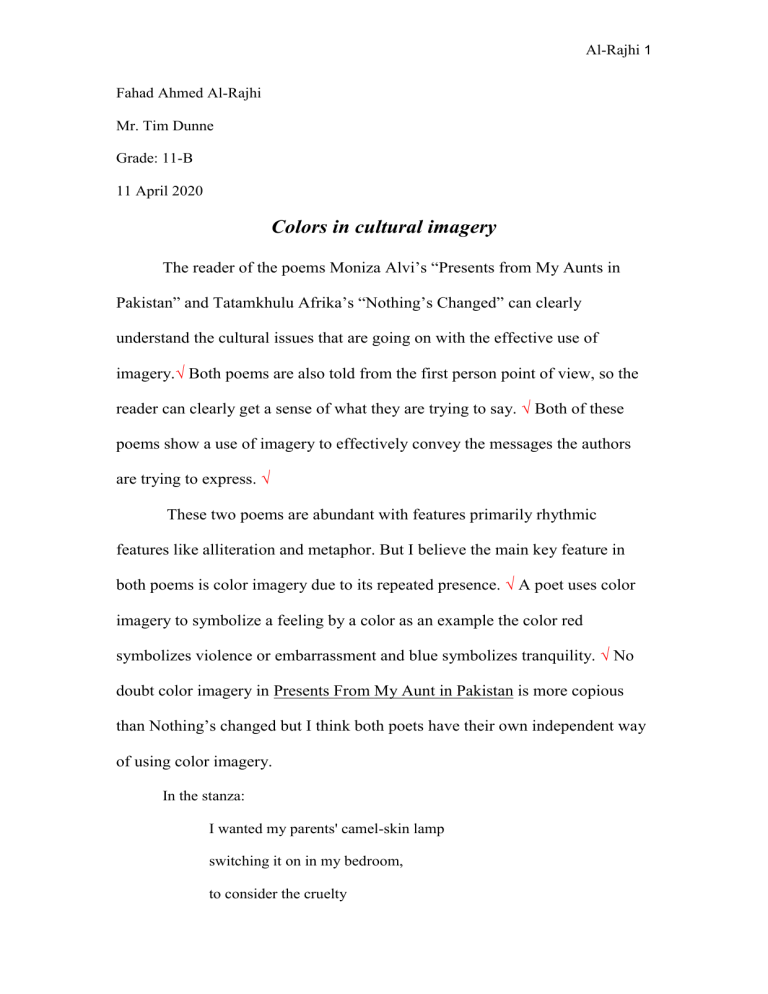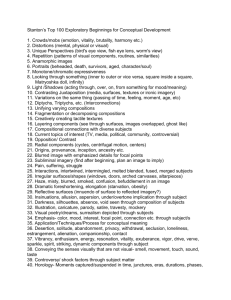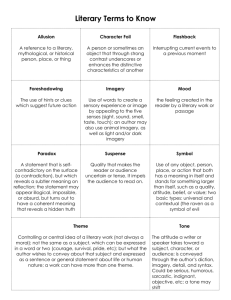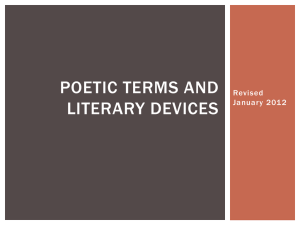Fahad R - Tim Dunne

Al-Rajhi 1
Fahad Ahmed Al-Rajhi
Mr. Tim Dunne
Grade: 11-B
11 April 2020
Colors in cultural imagery
The reader of the poems Moniza Alvi’s “Presents from My Aunts in
Pakistan” and Tatamkhulu Afrika’s “Nothing’s Changed” can clearly understand the cultural issues that are going on with the effective use of imagery.
√
Both poems are also told from the first person point of view, so the reader can clearly get a sense of what they are trying to say.
√ Both of these poems show a use of imagery to effectively convey the messages the authors are trying to express.
√
These two poems are abundant with features primarily rhythmic features like alliteration and metaphor. But I believe the main key feature in both poems is color imagery due to its repeated presence.
√ A poet uses color imagery to symbolize a feeling by a color as an example the color red symbolizes violence or embarrassment and blue symbolizes tranquility.
√ No doubt color imagery in Presents From My Aunt in Pakistan is more copious than Nothing’s changed but I think both poets have their own independent way of using color imagery.
In the stanza:
I wanted my parents' camel-skin lamp switching it on in my bedroom, to consider the cruelty
Al-Rajhi 2 and the transformation from camel to shade, marvel at the colors like stained glass.
√
This lamp, obviously a precious item brought from Pakistan to the UK, is like the girl’s mixed culture. When it is turned on, the bright, vibrant colors show through.
√
The salwar kameez that were sent to her as gifts by her aunts are also described as very colorful: ‘glistening’ orange, ‘peacock-blue’, and ‘apple-green’.
√
However, when the lamp is off, the colors are muted, which is like the ‘denim’ and
‘corduroy’ she longs to wear that are plain and common.
√ The lamp, like the girl, has two sides. Although the young Alvi can appreciate the beauty of the gifts, she rejects them to be like everyone else in the UK.
√ She is embarrassed in front of her schoolfriend because the colorful ‘costume’ is foreign and exotic.
√ She is already different from her classmates and the clothing draws more attention to it!
√
Afrika also uses imagery to show the reader his anger towards what he sees in his post-apartheid, old home community – District Six, formerly a mixed-race area of Cape Town.
Because the poem is written in the first person (like Alvi’s), the reader gets a sense of what it was like for Afrika seeing the despair as he walks down the road of “hard stones” √ feeling as if “nothing’s changed”.
√ The contrast between white and black imagery is very vivid throughout the poem.
√ “I press my nose/ to the clear panes” √ makes the reader visualize what it must have been like for him to look “in” the “whites only inn” and contrast this with the “working man’s café” √ around the corner. In the inn, there is crisp, white “linen” √ and flowers on the tables, but at the café that sells “bunny chow”, the tables are plastic and your
Al-Rajhi 3 jeans are used as a napkin.
√ Although there are no longer signs (like there were during apartheid), √ everyone still knows “where [they] belong”, √ meaning that there is still a division between the races.
√ Despite all the “positive” changes in
South Africa, the black/colored Africans still do not belong in these “new, upmarket” places.
√
In summary, with the use of imagery, the authors can help the reader picture in his mind what messages the authors are trying to express. This is particularly clear in the use of contrasting colors to show a clash of cultures or race.
√ With Alvi’s poem, the colors are either bright or dull, but with Afrika’s the colors are [mostly] black and white.
√ In addition, because the poems are told from the author’s point of view, the imagery becomes stronger and the reader can feel the emotions that they are going through in their cultural struggle, even though these cultures may be very different from his own.
√







